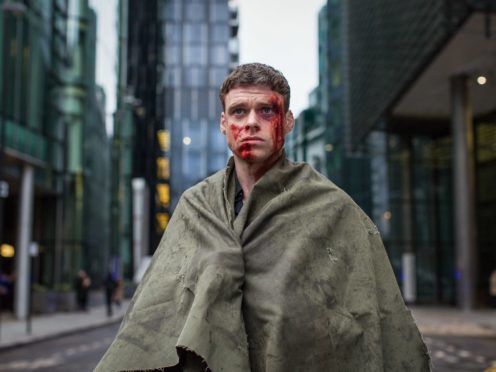The finale of hit thriller Bodyguard peaked with 11 million viewers, becoming the biggest TV drama since Downton Abbey.
The nail-biting BBC1 final instalment drew an average of 10.4 million and peak of 11 million – a 47.9% share – the biggest overnight figure for the entire series.
The episode is the biggest drama across all channels since much-loved period drama Downton Abbey aired in November 2011 on ITV, with 10.6 million viewers.
Many thanks to the entire production team of #Bodyguard @worldprods @BBCOne @_richardmadden @Misskeeleyhawes and to our viewers for a fantastic response to the series pic.twitter.com/ih13fwvbML
— Jed Mercurio (@jed_mercurio) September 24, 2018
And it is the biggest BBC drama in 10 years, since the Christmas Day 2008 episode of Doctor Who, which attracted 11.7 million.
Excluding the World Cup, Bodyguard, starring Richard Madden and Keeley Hawes, is the number one programme of the year.
Oh my days, not a single minute during the whole #bodyguard series that I wasn't on edge. Genuinely the best drama the BBC have produced 🎬👏 pic.twitter.com/HvDB62Z547
— Dan Smith (@danielsmith89) September 23, 2018
Creator Jed Mercurio thanked viewers “for a fantastic response to the series” with a message posted on Twitter.
The drama ended with a twist revealing who was responsible for the death of Home Secretary Julia Montague (Hawes).
For what is a man, what has he got?If not himself, then he has naughtTo say the things he truly feels and not the words of one who kneelsThe record shows he took the blows and did it his way.#Bodyguard https://t.co/t8LPZKN515
— John Strickland (@JohnStrickland6) September 23, 2018
Mercurio has hinted at the possibility of the BBC1 show returning for another series.
“If the ratings hadn’t been quite so high, then possibly everybody involved, including the BBC, would have said, ‘Well that was a nice little series but we’re just going to leave it at that and there won’t be any more’”, he told The Sun.
“We do feel very privileged and fortunate that there’s been such a response that it gives us that opportunity to at least think about doing more.”
#Bodyguard when Julia didn't appear at the end of the episode pic.twitter.com/ZxEO83fLug
— Brooke (@brookas11) September 23, 2018
He added: “We would probably approach any thoughts of a second series with the idea that it would create the opportunity for a third or fourth.”
The finale, which concluded with a revelation about the fatal explosion which killed Hawes’ character, had viewers gripped but divided by the ending.
At this point in #Bodyguard, I’m so suspicious of everyone, I’m starting to think even *I* was involved…
— James Moran (@jamesmoran) September 23, 2018
And @Tommyblx wrote on Twitter: “How more British can you get that the final scenes in the biggest drama series in 20 years are a trip to occupational health and driving away in a Nissan.”
How more British can you get that the final scenes in the biggest drama series in 20 years are a trip to occupational health and driving away in a Nissan. #bodyguard
— Tommo Walters (@Tommyblx) September 23, 2018
@ItsAlfieGreen wrote: “Bodyguard finale was so far fetched. As if he’d get a mental health appointment within a week…”
Ugh. #Bodyguard finale was so far fetched. As if he'd get a mental health appointment within a week…
— Alfie Green (@ItsAlfieGreen) September 23, 2018
The tense episode saw Army veteran and close protection officer Sergeant David Budd, played by Madden, strapped into a suicide vest.
Budd finally presented himself for counselling for his PTSD, and the finale hinted at a happy ending for the bodyguard and his wife.
The first episode attracted 10.4 million viewers, the highest figure for a programme launch since 2006.
Charlotte Moore, director of BBC content, welcomed the figures, saying: “The Bodyguard finale gripped the nation and has got everyone talking with a staggering peak audience of 11 million on BBC1, in a display of masterful storytelling from Jed Mercurio and stand out performances from an incredible cast.”
Bodyguard is now in the top five most-watched dramas of the decade, alongside EastEnders, Coronation Street, Doctor Who and Sherlock, according to consolidated figures, which include those who recorded a programme and watched up to seven days later.
The penultimate episode of Bodyguard was seen by 12.6 million, according to consolidated figures, more than the combined audience for the royal wedding.
